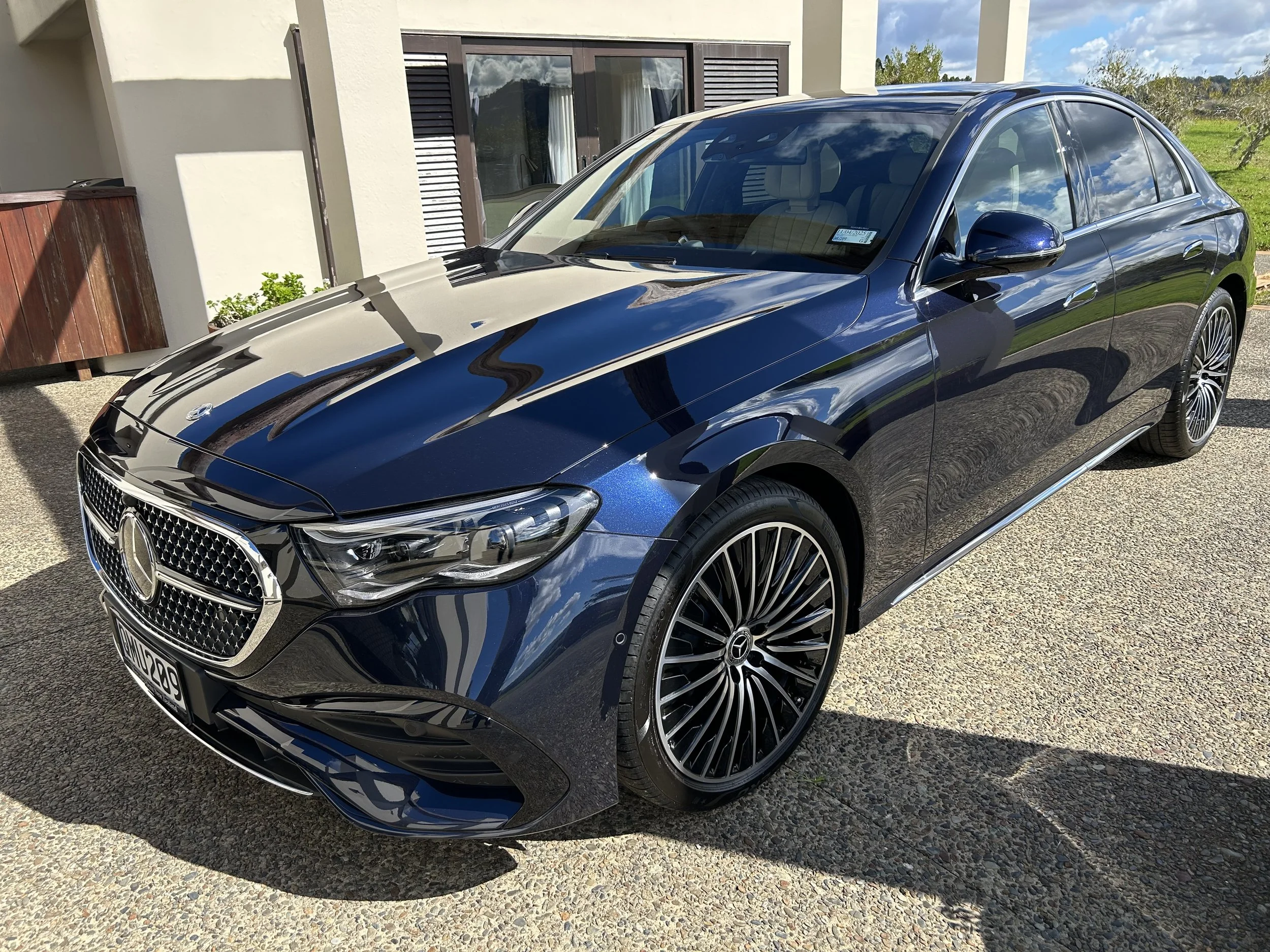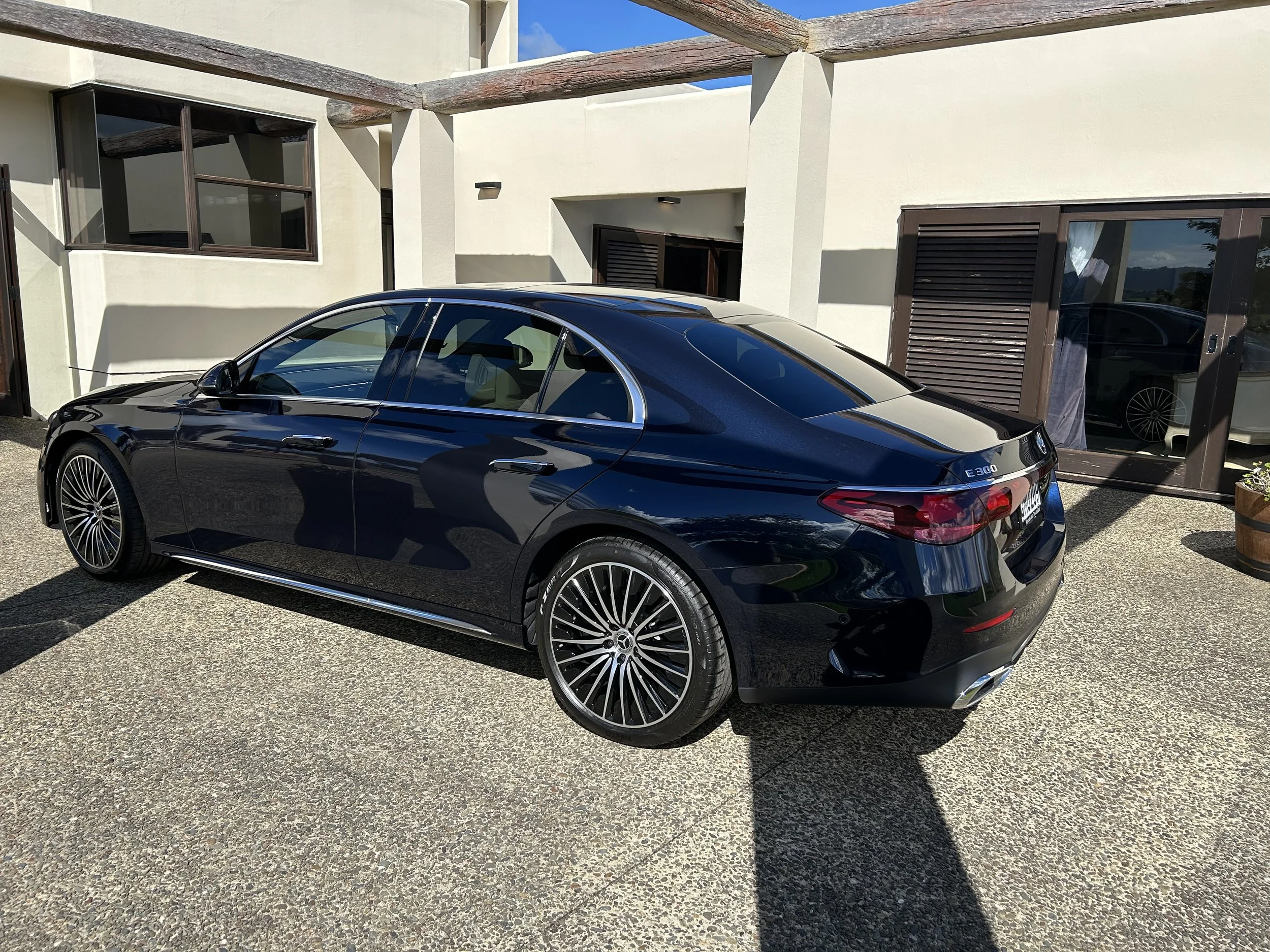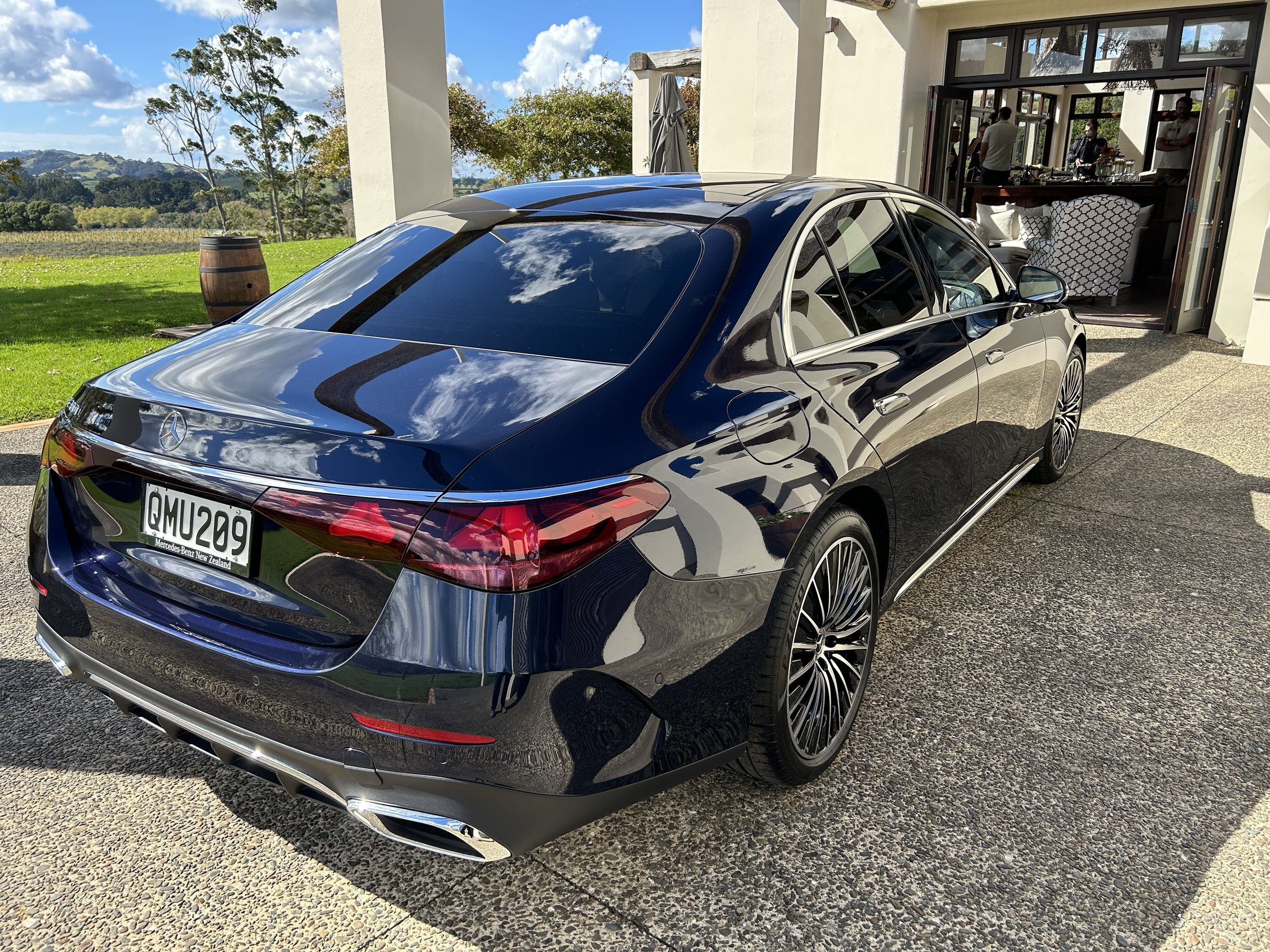E-Class first look points to new direction
/Potential of Mercedes’ medium sedan reducing to just one trim and engine choice is raised by display car.
CAR buyers don’t so much like ‘traditional’ cars any more - at least, not in the three box sense: Tastes have migrated to crossovers, sports utilities and other new formats.
Mercedes Benz is clearly among makers that is creating product to meet the new tastes. At same time, it still stays true to some established formats, even in knowledge these won’t achieve their yesteryear volumes.
So to the latest E-Class. A model that stands for solidity, level-headedness and common sense is less sought after these days, and that more limited appreciation will be reflected by how many variants from the 10th generation land here, how they spec and where they place.
That’s still to be explained, because officially the E-Class won’t be on local sale for another month. It’s on the brand’s website, but as a ‘future model’, with no detail about what variants are inbound.
Yet if around Auckland, you might see one. The car pictured here, which rolled out for display at the C63 AMG media event, is a taste tempter, in E300 specification.
Variants? Maybe we should be thinking as a singular. There’s thought the E300 could be the only choice. NZ takes models also selected for Australia and shares a chief executive officer with the Melbourne operation which, according to media there, has filed to approve the E300 as the sole version for sale.
That’s a significant rationalisation from the previous model range, which included up to 10 variants when all three body styles – sedan, coupe and cabriolet – and E200, E300, E350, AMG E53 and AMG E63 specification grades are included.
In sedan alone, the old car represented in three forms: $105,760 E200 in pure 2.0-litre petrol, $143,408 E300e (same engine, but with plug-in hybrid) and AMG E 63 S 4Matic, for $241,400.
The E-Class coupe and cabriolet – as well as the C-Class coupe and cabriolet – have been merged into a single model for their latest generations, known as the CLE, which is also due this year.
It is not clear if the E300 here is what overseas’ markets call an E350. If that is the case, then it will run a 190kW/400Nm 2.0-litre turbocharged four-cylinder petrol.
As for price? Maybe we shouldn’t be surprised if it sits around where the 300e was, if not higher. It’s patently the same kind of car in general ‘junior S-Class’ presentation as the previous kind, but a whole lot different in detail.
Ours was just a quick look around, and there was no driving opportunity, but from even that exposure some things are clear.
There are some neat design details; Mercedes is currently on a quest to make its famed logo a recurring signature on all of its cars. Here the slim new rear lights have a stylised three-pointed star motif and there are more, tiny, three-pointed stars in the grille.
The styling is very much in the key of E, but with a bit more drama - big oval air intakes set low into the front bumper are striking and there are the same neatly-done power bulges in the bonnet that the C63 sports.
Technology-wise, it’s another treasure trove. An international highlight is the projector lamp function of the front LED headlights. These can shine useful warning symbols onto the road in front, warning of an upcoming give way or stop junction, roadworks ahead, or even how close you're coming to a pedestrian walking along the verge.
The new dashboard delivers a full MBUX onslaught. As standard there’s a 14.4-inch touchscreen with haptic technology for the on-screen buttons.
You can specify to the display example’s ‘Superscreen’, which is not quite the same as the S-Class's 'Hyperscreen' which looks as if all three screens - driver's instrumentation, central infotainment and passenger-side display - are all one big unit. The Superscreen leaves the 12.3-inch driver's instrument screen separate, up behind the wheel, and adds on an extra touchscreen for the front-seat passenger.
Mercedes has included Zoom and Microsoft Teams conference calling apps in the software, hence one reason why there’s a camera on top of the dash, facing into the cabin.
Even though Mercedes calls a 'selfie' camera, that's not really its purpose. One function is so the driver can present personally to Zoom or Teams calls (when the E-Class is safely parked up of course). There’s also a safety aspect, in that it is also part of the driver drowsiness and attention monitoring system, and security one. It also serves as one of six interior cameras which have been added for remote security monitoring via the Mercedes phone app which, BTW, allows you to use your phone as a digital key. The camera also acts as facial recognition, automatically recalling the driver's preferences and settings.
The E-Class also gets artificial intelligence, of a kind, in that . it is is able to learn a user’s regular habits and patterns. One example: If your daily run takes you to an office car park, and you have to scan an entry tag, it’ll automatically lower the driver's window to help out. Useful or creepy? You decide.
As said, while MBNZ were happy to show this car, they don’t want to discuss details yet.
One abiding question is: What about another E300 e? The latest runs the same turbocharged 2.0-litre as the E300 but with 'EQ' 48-volt mild-hybrid assist, which includes a 17kW, 205Nm electric motor. It can be fast-charged at a 50kW DC charging point, and will can manage 114km of electric range on a full charge, the brand suggests.



















